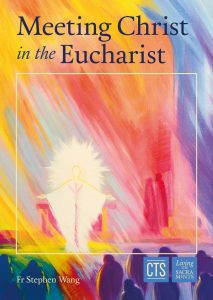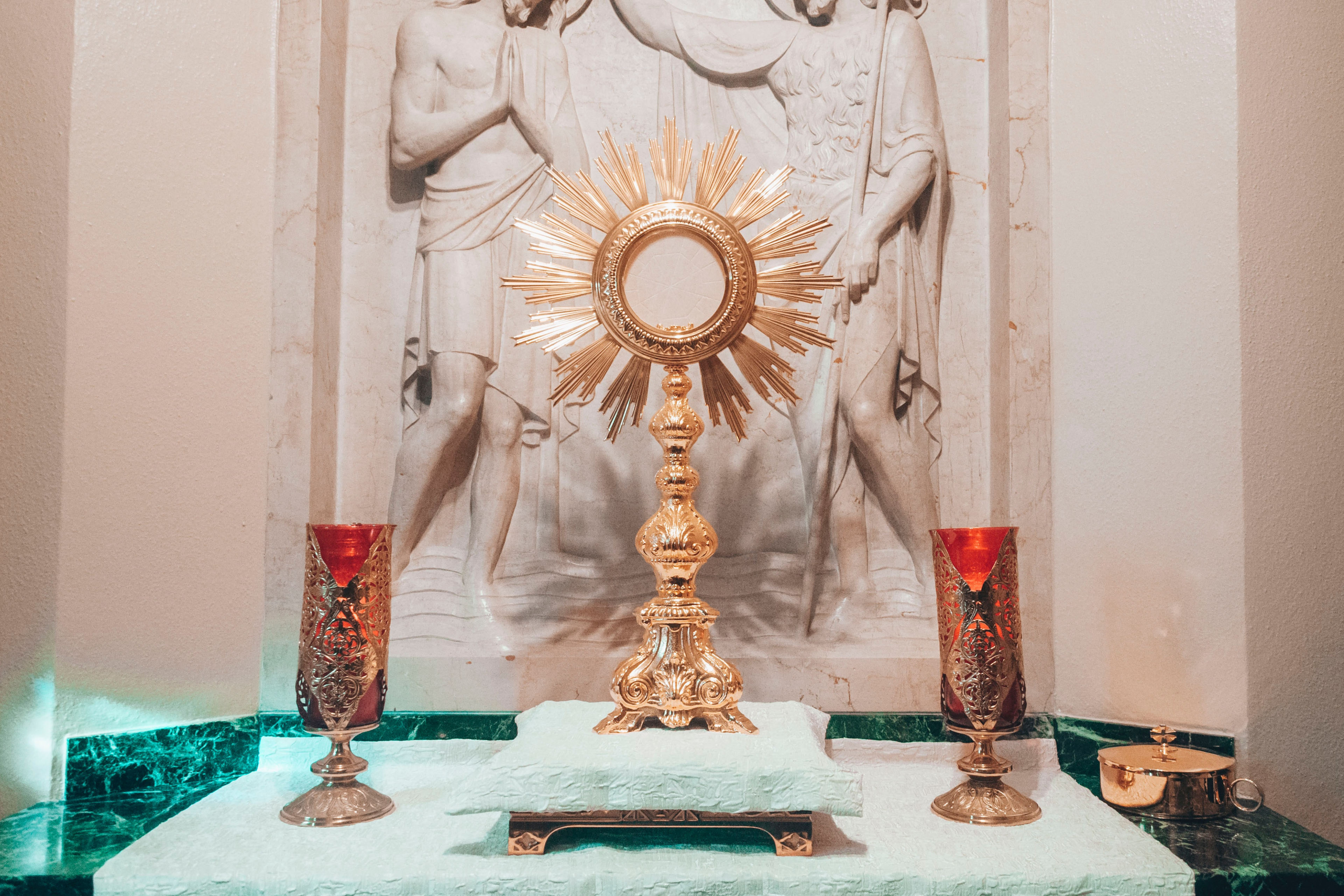If you enter a Catholic church, you will nearly always spot a sanctuary lamp burning near the tabernacle, which is where the communion hosts are reserved after Mass. They are kept in this way for two reasons: first, so that Holy Communion can be taken to the sick and housebound when necessary; and second, so we can continue to worship Christ in the Holy Eucharist.
Jesus Christ remains present here in the communion hosts, in what we call the Blessed Sacrament. This is not just a metaphor or a symbol. He is truly present – Body, Blood, Soul and Divinity – in all his power and glory and majesty. So if a church appears to be empty, we know that we are never alone.
Whenever we come near to the tabernacle, even if the Blessed Sacrament is not exposed, we come into his hidden but powerful presence; heaven is laid open before us; and we can adore him and share our lives with him in a most intimate and profound way. We can speak to him, heart to heart. It is like Moses meeting the Lord in the burning bush, or the disciples walking up the mountain with Christ at the time of his Transfiguration.
This doesn’t detract from the importance of the Mass, or the significance of the Blessed Sacrament as spiritual food – it simply helps us to appreciate his Eucharistic presence even further. As St Augustine wrote: “No one eats that flesh without first adoring it.”
This is such a consolation, knowing that he is with us in this way. When we go to Mass on Sundays, it makes us want to be more reverent – from the moment we enter the church to the moment we leave. We want to be more and more conscious of his loving presence. We genuflect to him as we enter and leave our places. We pray to him as we prepare for Mass and after it has ended. We remember that we are in the Court of Heaven, in the presence of our King, in the company of this visible community, and with the hidden presence of all the angels and saints.
This comes into special focus when we have Eucharistic Adoration (“Exposition of the Blessed Sacrament”) – when the large host is taken from the tabernacle, put in the monstrance, and placed on the altar for our worship. Christ is not “more present” in this way, but he is in a way “more visible”, and given more public honour.
As we gaze at his Sacred Body in the host we become more conscious of his holy Presence, more attentive, more grateful. And because we are worshipping him as a community, in a public liturgy, our prayer and worship has more significance. We adore Christ as a community, in the name of the Church, bringing the praise and sorrow and intercession of the whole Church to him, together with the needs of the whole world. And we unite ourselves with Christ, through the Holy Spirit, in his praise and thanksgiving to the Father.
If the period of Adoration can conclude with Benediction, when the priest or deacon blesses the congregation with the Sacred Host, then this is a fitting climax to the liturgy.
There are many beautiful traditions surrounding our worship of the Holy Eucharist. Public processions with the Blessed Sacrament allow our Eucharistic faith to become a witness to others, which strengthens our own faith and gives them an opportunity to encounter Christ. Longer periods of Exposition such as the Forty Hours Devotion and Eucharistic retreats encourage a community to deepen their love for the Eucharist. And some parishes and oratories have Perpetual Adoration, with a rota of worshippers, so that the praise and thanksgiving becomes unceasing.
 This blog is extracted from Meeting Christ in the Eucharist. Grow in love for Christ in the Eucharist with prayers, scripture readings, meditations, and quotations from the Catechism and from the saints, along with stunning art to aid personal reflection.
This blog is extracted from Meeting Christ in the Eucharist. Grow in love for Christ in the Eucharist with prayers, scripture readings, meditations, and quotations from the Catechism and from the saints, along with stunning art to aid personal reflection.
To learn more about the Eucharist, and to reflect upon these truths with the help of stunning Catholic art, order your copy of Meeting Christ in the Eucharist.
